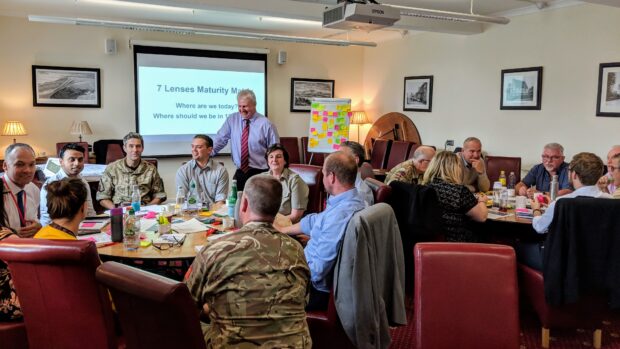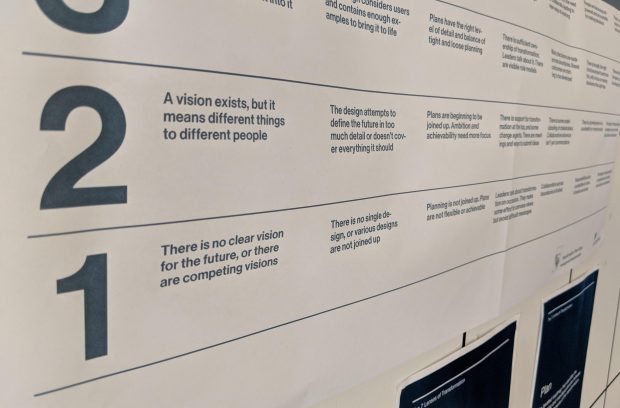Across government teams are using the 7 Lenses Maturity Matrix to help deliver their transformations. One bit of feedback we get in the central team is people can be worried that scoring their work 1 out of 5 on the scale is too negative. That people can be concerned to give a low mark, in case it reflects badly on their work.
So here are three reasons why “being a 1” on the matrix is a good thing.
An honest conversation
Firstly, the most important bit of context: the 7 Lenses Maturity Matrix is not a formal standard, assessment criteria, or the structure of a methodology. It expands each of the 7 Lenses of Transformation into five levels to provide a framework for the right conversation.
The matrix has been really useful to teams who want to consider a transformation in a structured way. The lenses give you the language, and the matrix allows a team to answer the questions “what is good enough?” and “what’s our ambition?”
The value is in having the conversation - not getting the highest score.

A key attribute to this is honesty - people sharing their candid reflections on work. If people give a rating of 1, that’s a great indication that they have not been under pressure to skew the results. They have been open about their thoughts and shared their thoughts on what needs to improve.
A rating of 1 is also a good sign that people are candidly challenging optimism bias in the room. Over-optimism in projects is not new (the NAO released a report on this in December 2013), and the Infrastructure and Projects Authority keep this at the centre of their attention, as mentioned in this speech from former CEO, Tony Meggs.
You should always be wary of people happily declaring the situation is good enough across the board - there's often more behind the scenes. A low score will be the start of people revealing this.
An honest conversation is the right one to have.
Understand your ambition

The two questions that we recommend people use to frame their discussions are “where are we today?” and “where should we be in 12 month’s time?”
I’ve helped facilitate a number of workshops with this structure, and without fail, the ambition over the next year is always really exciting, really stretching, and really significant. But it is not always realistic.
This is where having a clear picture of the current situation is worth its weight in gold. Being open allows you to understand - with the framework there to help you - if your ambition is within reach. Despite what you wish for, leaping up three levels across multiple lenses may not be achievable.
So putting your hand up and saying “I think we’re a 1 at the moment” will help you understand the distance to reaching the ideal situation - and whether it’s truly deliverable. Without that picture, you’re at risk of over-reaching or over-promising, and being caught out later on.
Focus your action
And lastly, calling out the areas that are lowest on the matrix will help you prioritise. If people give a lens 1 out of 5, facilitators and leaders will have clear feedback to focus on the particular areas.
But a single assessment in a room might get lost. To help interpret the volume of feedback you may get from a workshop, I find it's useful to ask these type of questions:
- Is there a big difference in numbers across the room? Do some teams think things were further along than others? What are the reasons behind that?
- Are you seeing a difference across the lenses? Are you mostly ok, apart from a low number on one or two? What are the critical differences?
- Does the gap between the situation today and "good enough" need to be closed before your more ambitious work takes off? Do you need to fix to get ready?
All about the conversation
The 7 Lenses framework is one way that people are using to structure the right work in transformation programmes. Making the most of it is not possible without a culture of honesty, a clear understanding of your future, and a prioritised plan of action.
It is so important to have these conversations - both in structured workshops and informally during the working day. And if you think that something is a 1 out of 5, do not keep it to yourself. Say it out loud. It leads to good things.
For more information on transformation, check out the guidance and tools on GOV.UK, and sign up for blog updates to be kept in the loop when we publish new material.
